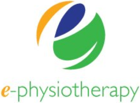How do you know if your dizziness can be treated with physiotherapy?
There is an App to help you work out if physiotherapy is appropriate for your dizziness. If you search in Google Play or Apple iTunes for Neck Dizziness Sue Reid, you can download the app and it will guide you.
There are several types of dizziness, two of which can be treated with physiotherapy successfully.
Benign Paroxysmal Positional Vertigo (BPPV). This is when the fluid in the balance areas of your inner ear canals form crystals. This is most commonly in the posterior canal. These crystals stimulate and adhere to the receptors that measure the position of your head and make you feel like you are moving even though you are not. This conflicts with what your eyes are telling you and you feel dizzy. Normally there are no crystals in the fluid in your inner ear, it is just fluid that moves as your whole body moves and this stimulates the receptors but it stops moving when you stop moving, so you don’t feel dizzy.
20% of people with dizziness have BPPV and over the age of 65, 50% of people with dizziness have BPPV. It is usually accompanied by nystagmus (a flicking movement of your eyes). People with BPPV will report a spinning, rotatory motion to their dizziness whereas other forms of dizziness do not usually repot spinning. Unfortunately as you get older, BPPV may present as more unsteadiness than vertigo, making it harder to differentiate from other causes of dizziness.
To confirm the diagnosis, a health professional needs to do a test called the Dix-Hallpike manoeuvre. This involves moving you from sitting to lying with your head down and rotated. If this causes your dizziness and nystagmus, it confirms BPPV. Treatment then involves the same movement and then subsequent changes in position to move the crystals away from the receptors and alleviate your dizziness. This is called the modified Epley manoeuvre.
Less commonly, the lateral canal of your inner year (vestibular system) can be affected and cause vertigo. The tests for this involve fast turning of the head to see if sympoms are reproduced. Treatment for this is different to the Epley manoeuver and is called the barbecue roll.
Persistent Postural Perceptual Dizziness (PPPD). This is a complex condition that is hard to diagnose. It is often a diagnosis of elimitation. In other words, if you don’t have BPPV or other diagnosable conditions, you may be told you have this condition. It means that one of multiple causes is creating a mis match between what your brain expects when you move and what your body tells you it is doing through proprioceptive tissues (muscles, tendons, joints and ligaments), the inner ear (vestibular system) and the visual system. This can happen after a stroke or head injury, but there does not need to be an obvious cause. Treatment involves starting with very simple eye movements or head movements that bring on the dizziness and over time increasing the complexity of those movements to help your body systems re-align.
Dizziness can come from tension in your neck, this is called cervicogenic dizziness. This type of dizziness is not a feeling of spinning but more unsteadiness or imbalance. Physiotherapy involving mobilisation and release of soft tissue releases of the neck, jaw and upper back can resolve these issues with just a few treatments in most cases. Symptoms of stiffness or neck pain accompany the dizziness and sometimes blurred vision, tinnitus and jaw problems accompany it as well. A specific test called the smooth pursuit test differentiates this form of dizziness from other causes.
Low blood pressure or problems with your heart can cause light-headedness/wooziness. This can also lead to near fainting episodes. Usually these symptoms come on with getting from sitting or lying to standing.
Vertebrobasilar insufficiency (VBI) also causes dizziness. This simply means that the blood flow in one of the two vertebral arteries is impaired. These arteries supply about 20% of the blood flow to your brain. When the head is positioned into extension and/or rotation for a sustained period, it reduces the blood flow in one vertebral artery. If the opposite vertebral artery is damaged or blocked dizziness occurs. This usually takes at least 10 seconds to occur.
This type of dizziness should not be treated with manual physiotherapy techniques as there is a risk of neurovascular and neurological events. You will be referred to your GP to see if blood flow imaging through a consultant is needed.


